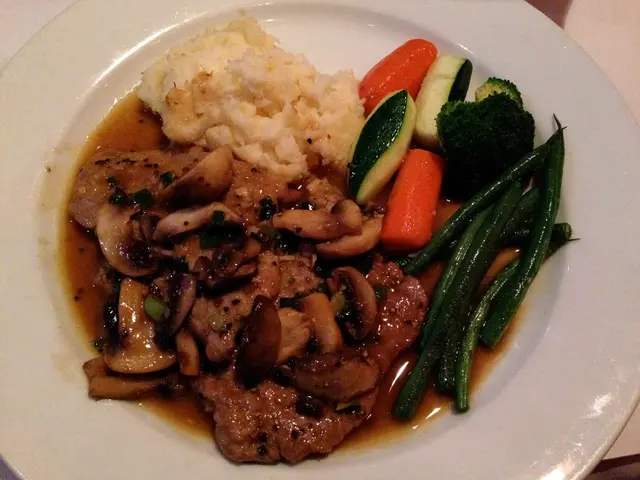Signs to Monitor for Problematic Varicose Veins
Varicose veins and deep vein thrombosis (DVT) are conditions that can affect the circulatory system, particularly in the legs. Understanding these conditions and their potential health risks is crucial for maintaining good health.
Varicose veins are abnormal blood vessels that typically develop in the legs and feet, appearing as bulging, twisted clusters of blue or purple veins. These veins can cause a range of symptoms, including aching, heaviness, swelling, itching, burning sensations, venous eczema, and darkened skin. In severe cases, varicose veins can lead to more serious health issues such as deep vein thrombosis (DVT) or a pulmonary embolism.
One of the main complications of varicose veins is the formation of blood clots. These clots can lead to superficial thrombophlebitis, a condition characterised by severe, sharp pain along the surface of the vein and a hardened, red vein. In some cases, these clots can travel deeper into the veins and become life-threatening deep vein thrombosis. This condition can cause a pulmonary embolism, a blockage in the arteries of the lungs by a piece of a blood clot that has travelled from elsewhere in the body, which is a medical emergency.
Varicose veins can also lead to leg ulcers, which are slow-healing, painful sores on the lower legs. These ulcers occur due to prolonged poor circulation and blood pooling in varicose veins, which increases pressure and damages the skin. In severe cases, these ulcers can become infected and require medical intervention.
Another complication of varicose veins is bleeding. The thin skin over varicose veins can rupture easily, leading to significant bleeding. If not managed properly, bleeding from varicose veins can be fatal in rare cases.
Deep vein thrombosis, on the other hand, involves blood clots forming in deep veins, usually in the legs. DVT can cause pain and swelling but carries the major risk of clots traveling to the lungs (pulmonary embolism), which is life-threatening. DVT can also cause post-thrombotic syndrome (PTS), a chronic condition where vein damage leads to persistent swelling, pain, skin changes, and ulcers—essentially a severe form of chronic venous insufficiency (CVI).
It's important to note that both varicose veins and DVT can be managed with proper diagnosis and treatment. Removing varicose veins or treating the source that's feeding into them can help alleviate varicose veins. Maintaining a healthy lifestyle, including wearing compression socks, exercising regularly, maintaining a body mass index of 25 or less, and seeking medical attention for any symptoms, can help prevent and manage these conditions.
In summary, varicose veins and DVT are conditions that can have serious health implications if left untreated. Understanding the potential risks and taking preventive measures can help maintain good health and quality of life. If you have varicose veins or suspect you may have DVT, it's a good idea to talk to your doctor about it.
| Condition | Potential Health Risks | |---------------------|-------------------------------------------------------------------------------| | Varicose Veins | Blood clots (superficial thrombophlebitis, DVT), leg ulcers, bleeding, discomfort, skin changes[1][3][4] | | Deep Vein Thrombosis | Pulmonary embolism (life-threatening), post-thrombotic syndrome causing chronic venous insufficiency, leg pain/swelling, ulcers[1][2][3] |
- Understanding the complexities of varicose veins can help reveal potential risks such as blood clots, leg ulcers, and in rare cases, bleeding.
- Deep vein thrombosis (DVT) not only causes pain and swelling but carries a significant risk of life-threatening complications, like pulmonary embolisms.
- In addition to its evident symptoms, DVT can lead to post-thrombotic syndrome, a chronic condition characterized by persistent swelling, pain, skin changes, and ulcers.
- A proactive approach to health and wellness includes maintaining a healthy lifestyle, which can help in preventing and managing conditions like varicose veins and DVT.
- Proper diagnosis, treatment, and management of varicose veins and DVT can help alleviate symptoms, prevent complications, and ensure a good quality of life for those affected by these conditions.






